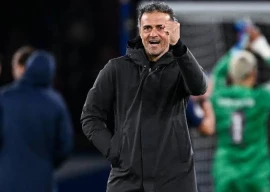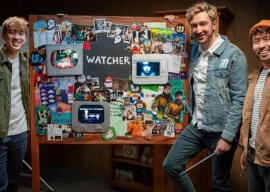
The South Asian Free Media Association (SAFMA) and supporters of Kanak Mani Dixit and Shanta Dixit’s “Great Nepal-India-Pakistan Spinal Beetle Drive” fundraising initiative arranged a talk to spread awareness about the cause.
The event was held at Safma centre on Monday.
The married duo is raising funds for the Spinal Injury Rehabilitation Centre-Nepal to cover the cost of expanding its capacity from 38 beds to 51.
Kanak Dixit attributes this increased need to the high frequency of accidents in Nepal, largely due to the hilly terrain of the country. Kanak himself fell from a cliff and suffered a spinal cord injury while trekking around the Annapurna Region in August 2000, leading to the emergence of the centre.
The journey commenced in a blue, 1973 model Volkswagen Beetle on November 4, 2011 from Kathmandu, Nepal. Since then, it has passed through Lucknow, Agra, New Delhi and Amritsar in India before crossing over to Pakistan via the Wagah-Atari border. After visiting Mayo Hospital in Lahore, the couple headed to the AF Institute of Rehabilitation Medicine in Rawalpindi. From Islamabad, they plan to go to the Paraplegic Centre in Hayatabad, Peshawar, on November 16.
The couple stress that fundraising is in no way the only motive behind this effort. Much like their previous drives in 2002 and 2005, this one also attempts to build bridges and understanding between the components of South Asia.
Kanak said, “We are trying to use spinal injury as a tool to build connectivity and networking in South Asia to cross the barbwire of animosity.”
“Unlike Pakistanis and Indians, who do not have the privilege to travel freely into each other’s countries, Nepalese do, and we are trying to utilise that,” he added.
He also expressed the pressing need to travel by land as opposed to airplanes, as it is cheaper and more accessible to the masses. His wife, Shanta, added to this sentiment, “this trip has had a double purpose: to raise funds but also to increase connectivity and explore new places”. Such exploration of South Asia is indeed not possible boarded on an airplane.
She added, “While travelling on GT Road, the history of the area can be felt and one wonders if this place was one before, why can’t we have the same oneness again?”
Through this drive, efforts to connect and help each other are also taking place. Mayo Hospital in Lahore has offered two medical seats for postgraduate specialisation for five years to Nepalese students.
In contrast to Nepal’s high spinal injury due to accidents, Pakistan has seen many suffer similar injuries during earthquakes. “One of the aspects of the visit is to understand the impacts of disasters on medical centres and how rehabilitation for the effected populace is taking place,” she said.
The spirit of collaboration, friendship and understanding was echoed by Kishwar Naheed and Tahira Abdullah also as they commended the initiative. Tahira Abdullah commented that in addition to the various positive outcomes of the drive, the Blue Volkswagen journey could be an inspiration to the youth given that the Volkswagen is such a prominent symbol of popular culture that has sustained its fame through the decades.
Published in The Express Tribune, November 15th, 2011.










































COMMENTS
Comments are moderated and generally will be posted if they are on-topic and not abusive.
For more information, please see our Comments FAQ